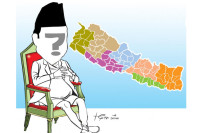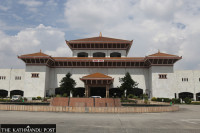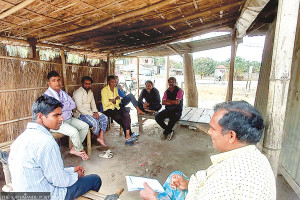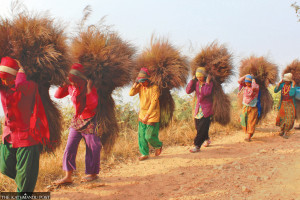 21.12°C Kathmandu
21.12°C KathmanduEditorial
Tame runaway prices
The household budget has come under tremendous pressure once again, as vegetable prices are soaring. The price of vegetables has jumped by up to 53 percent in the last two weeks, with a number of green produce recording price hikes of up to Rs40 per kg, official data shows.
The household budget has come under tremendous pressure once again, as vegetable prices are soaring. The price of vegetables has jumped by up to 53 percent in the last two weeks, with a number of green produce recording price hikes of up to Rs40 per kg, official data shows.
Low-middle and middle income groups spend a big portion of their income to put food on the table. Since vegetables are a staple for many, the price hike tends to add a financial burden on families, leading to reduction in the consumption of other nutritious items and expenditure in other productive areas.
Also, a surge in vegetable prices builds inflationary pressure, as the green produce makes a contribution of 5.5 percent to the consumer basket, which is used to calculate inflation. So, there is an urgent need to contain soaring vegetable prices, as excess inflationary pressure will only erode the value of money.
In a free market economy, prices are determined by supply and demand in the market. So, the government does not have the authority to directly intervene in market prices. Yet, the government, as a regulator, can always track down sources that are putting upward pressure on prices. The government should conduct such studies immediately and fix the problems to stabilise runaway prices.
An initial market monitoring report of the government has shown that “middlemen”, who purchase vegetables from farmers and sell them to wholesalers, are involved in the latest episode of the vegetable price hike. These intermediaries have always found ways to purchase vegetables from farmers at lower prices. They make farmers believe that vegetables, which have a very short shelf life, will go to waste if they are not sold immediately. These intermediaries then sell these products at higher prices to wholesalers, who add their profit margin too. So, by the time vegetables reach end consumers, prices have increased manifold. This clearly shows farmers, who take the risk of growing vegetables, and end consumers, who pay the ultimate price, bear the brunt of this price hike, while intermediaries, who do not bear any cost except for small handling charges, end up booking a huge profit.
Studies have shown that vegetable farmers can wield significant power over intermediaries if they work in groups, such as cooperatives. Many cooperatives formed in Nepal have also dealt directly with wholesalers to sell their produce. This mechanism helps farmers to secure a better price for their produce and prevents end consumers from falling victim to malpractices of intermediaries. This creates a win-win situation for both farmers and end consumers.
The government and other concerned stakeholders should work towards protecting the interest of both farmers and end consumers if Nepal wants to see itself as a country that is self-sufficient in food production and keep social unrest, triggered by government’s inability to tame prices, at bay.



















